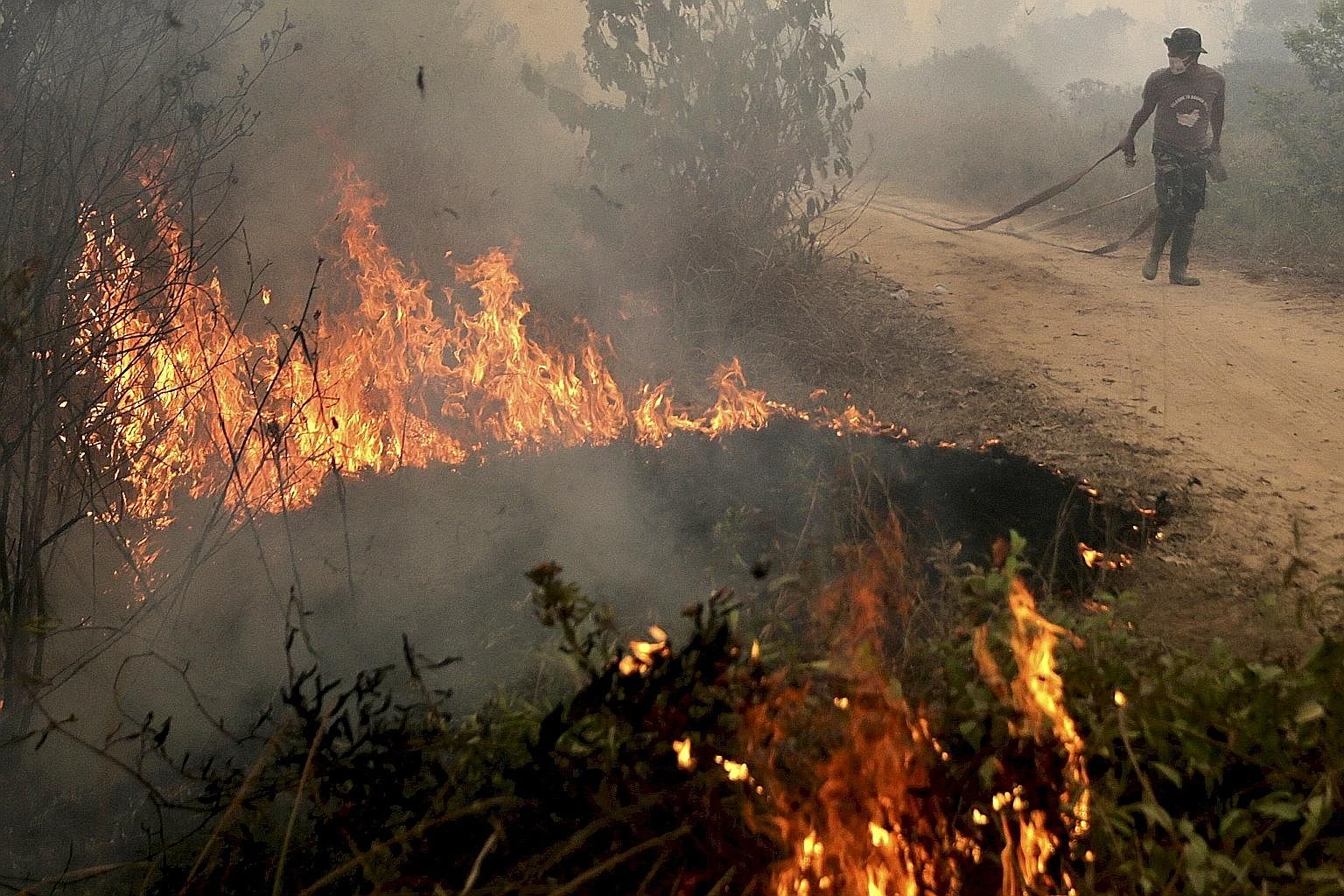Out the window, I could see Singaporeans hurrying down the street before rushing inside to escape the choking haze.
With NGO colleagues from Europe and the United States, I was attending a conference last week on how businesses can tackle deforestation, while much of South-east Asia was suffering from the impact of weeks of forest fires.
Recent days have seen schools closed in Indonesian towns, as well as in Singapore and Malaysia's capital, and the haze is expected to continue for months. It was ironic to sit in a room with some of the most powerful companies in the world that could take steps to address this problem, while we couldn't even go outside during the coffee break.

When reporting on forest fires, the media always asks: Who are the culprits? Is it communities or companies setting forests on fires?
However, with the haze now becoming an annual scourge, the question should really be: How can these fires be prevented?
The answer is that the real cause of the worst haze is the drainage of peatlands.
Peat swamp forests - that line much of the coasts of Sumatra and Kalimantan (Borneo) - are being drained to create more and more oil palm and pulpwood plantations.
And when the peatlands are drained, they become a tinderbox that any campfire or cigarette butt can set alight, burning in conditions that create more smoke than ordinary forest fires.
The situation in Indonesia worsens in El Nino years such as this, which are characterised by periods of drought that increase the extent and longevity of peat fires, which can continue to smoulder underground for weeks or more, as long as the peat remains dry.
It is estimated that the extensive burning of peat and vegetation in the 1997 El Nino year released between 0.81 and 2.57 gigatons of carbon, then equivalent to a staggering 13 to 40 per cent of global carbon emissions from fossil fuels. Global climate change is expected to create a vicious circle, increasing the frequency of El Nino events.
So, when this is known, why do companies continue to drain these peatlands? And why does the government not do all it can to protect and restore Indonesia's remaining peatlands?
The answer is simple: Plantation companies covet peatlands because they represent a rare resource: a broad area of land which is only sparsely populated.
However, oil palm and pulpwood acacia trees cannot grow if their roots are constantly wet, so plantations require the peatlands to be drained. Meanwhile, local and national governments have designated palm oil as a priority industry, favouring investors' interests over environmental concerns.
The costs of this short-sighted rush to open up Indonesia's forests and peatlands are all too apparent at the moment. Indonesian President Joko Widodo's Cabinet calculates that the fires and haze have set Indonesia back an estimated 300 trillion to 475 trillion rupiah (S$30 billion to S$47.5 billion).
Yet, even as the crisis raged, President Joko's government announced it would revise a dozen regulations to smooth the way for further forestry and plantation enterprises.
In fact, there is regulation on peatland management, but it falls far short of providing adequate protection, and is not among those the government said it would revisit.
Meanwhile, there are no maps to base peat management regulations on. As an environmental non-governmental organisation, Greenpeace would like to see regulation of peat management urgently implemented, after measures have been taken to protect all peatlands, regardless of their depth or whether they are included in existing concessions.
Last year, President Joko went with Greenpeace to the fire-impacted village of Sungai Tohor in the heart of Riau province's peatlands, and helped the community dam a canal draining a nearby company plantation.
He later promised to ensure a thousand dams are built in Riau to end peatland drainage. A year later, the area where the President's dam stands is not impacted by the fires, but only a handful of the thousand dams were ever built, and so in the rest of Riau, little has changed.
Quite inexplicably, the President last week actually ordered canals to be dug in Central Kalimantan peatlands in order to transport water for firefighting purposes.
This is a disastrous mistake, as the canals will not supply enough water to douse the widespread fires, and will only contribute to drying out peatlands further over the long run.
Deforestation rates are still rising in Indonesia, and this year's fire season shows that a new level of ambition on peatland protection is needed. Around 11 million ha - around half of Indonesia's total peatlands - has been cleared and drained. While large players in the plantation industry have made strong commitments to forest and peatland protection, this generally only extends to a promise not to open up new areas of peatlands, so the impact on the ground is slim.
To stop the annual fire and haze crisis, we need companies and governments to work together to identify, protect and restore critical peatlands. This means that a "no development on peat" policy is not enough: companies need to address the legacy of their plantations by restoring drained peatlands to prevent them from catching fire.
In practice, this means that some plantation areas will need to be returned to their natural flooded condition. It means that companies that have benefited from a decade of peat drainage will need to set aside large amounts of money to compensate communities and restore the peat forests.
So far, only one company has actually started reflooding peatland areas, albeit in a very small percentage of its estate. We call upon the plantation industry to follow this example, and for buyers of plantation commodities like palm oil to help fund the restoration of peatlands.
Only then can we be assured that we are not merely fighting fires, but actually tackling the problem.
• Bustar Maitar is the global head of Greenpeace's Indonesia Forest Campaign.
